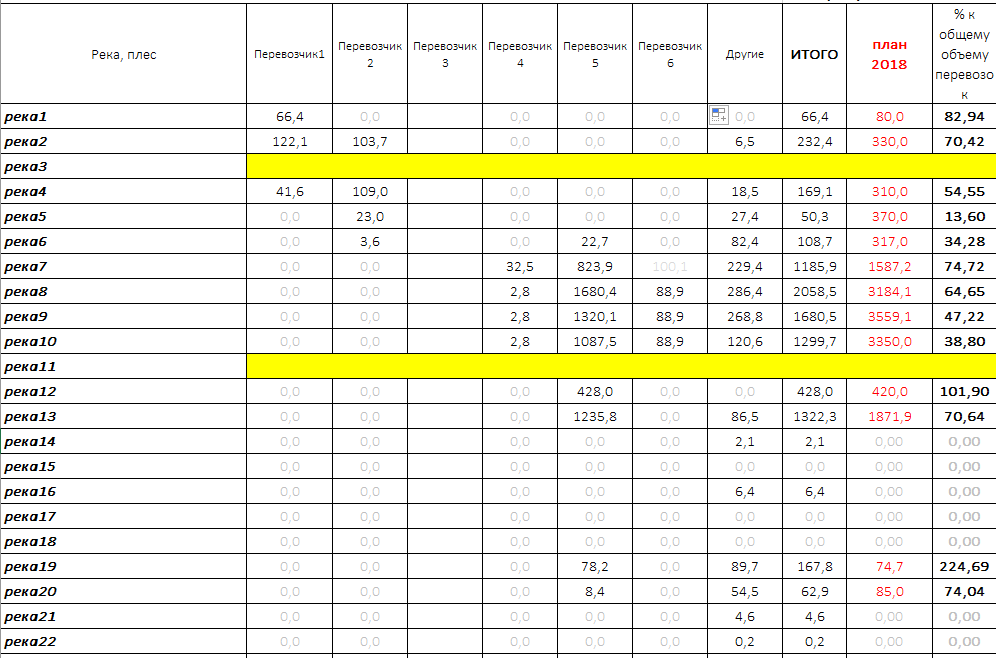Answer the question
In order to leave comments, you need to log in
Is it possible to make such a request?
Hello, how can I make a query so that as a result a table similar to this one appears:

Answer the question
In order to leave comments, you need to log in
When you know the possibilities of the dialect well enough, everything is easy and just
the TransactSQL dialect
DECLARE @mass = (SELECT SUM(value) FROM transact)
SELECT t.river,
SUM(CASE WHEN t.driver IN (1,2,3)THEN t.value ELSE 0 END) AS 'pervochik1',
SUM(CASE WHEN t.driver IN (4,5,6)THEN t.value ELSE 0 END) AS 'pervochik2',
SUM(CASE WHEN t.driver IN (7,8,9)THEN t.value ELSE 0 END) AS 'pervochik3',
SUM(t.value) AS 'itog',
p.value AS 'plan',
SUM(t.value)/@mass AS 'procent'
FROM transacts t
LEFT JOIN plan p ON p.river = t.river
GROUP BY t.river, p.valueHow to make a query depends on how the data is stored in the database.
And if you wanted to ask how to store it in the database, then if the number of rivers and carriers can be any, then you can use the Attribute Entity Value model. But it is difficult to collect data according to such a model, and with an indefinite number of columns, you will need to dynamically collect the query. As already written, pivot is used for this, this is a very expensive operation, so if there is an opportunity it is better to consider other options.
Didn't find what you were looking for?
Ask your questionAsk a Question
731 491 924 answers to any question